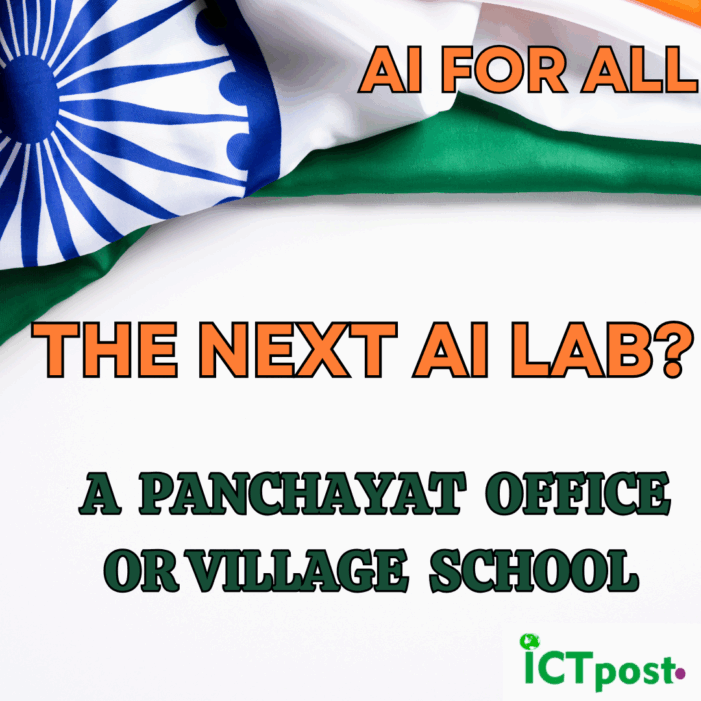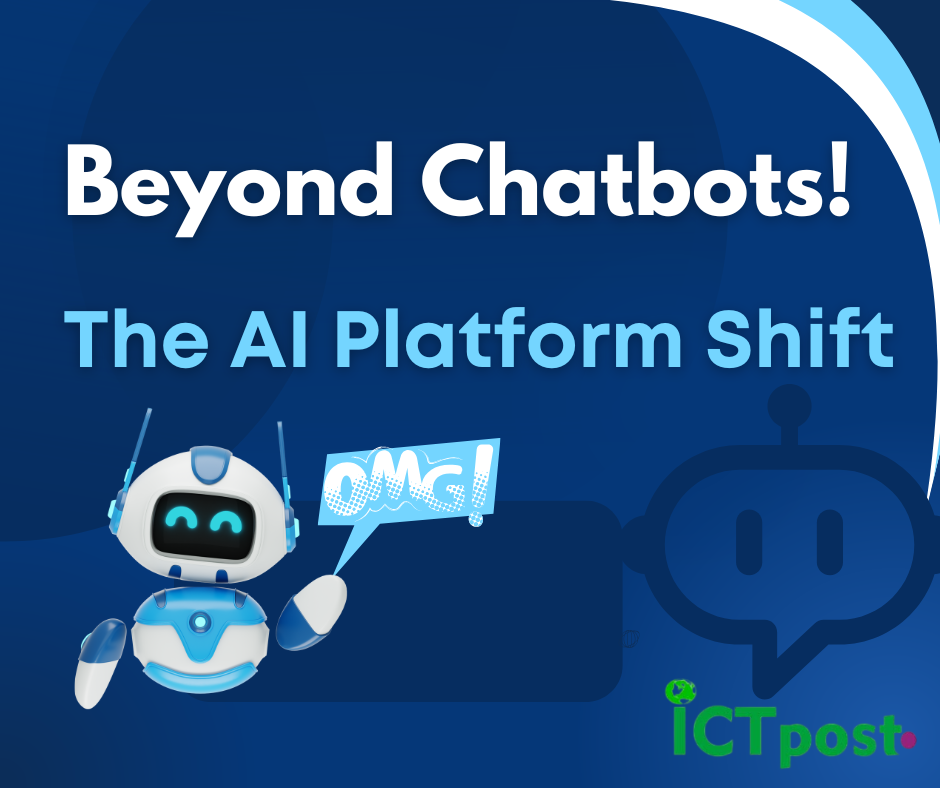By ICTpost Research Desk
#AIforAll #DigitalSwaraj #AILocal
Artificial Intelligence is no longer confined to research labs or corporate offices. It’s now in classrooms, homes, farms, and smartphones across India. But even as AI tools become more accessible, most users remain unaware of one important fact: you don’t need to rely on big tech or the cloud to use AI.
In fact, with the right tools and a bit of curiosity, you can set up a fully functional, secure, and private AI system at home — using open-source models, basic hardware, and full control over your data.
This is not just a technical how-to. It’s a vision for AI Swaraj — a model where individuals and communities can own and control their AI tools, free from surveillance, data harvesting, or foreign cloud dependence.
Why Use AI Locally?
Today, many popular AI apps and chatbots store your queries, analyze your habits, and use your data to train future models or sell targeted ads. The phrase “your data is our business model” has become far too common.
A local AI setup turns this model on its head. With open-source tools and local hosting, your data stays with you. You’re not uploading private files to third-party servers or handing over your digital footprint to unknown algorithms.
How the System Was Built
Here’s how an AI system can be built on a regular home computer — something many tech-savvy Indians can replicate:
- Operating System: Start with a Windows 11 PC, and install WSL2 (Windows Subsystem for Linux) to run Linux apps inside Windows.
- Containers: Install Docker, which allows you to run different applications in isolated “containers.”
- AI Models: Use free, open-source models like Llama 3, Gemma, or Granite via platforms like Ollama.com. These models can run locally, without needing internet access.
- Interface: Add a browser-based tool like Open WebUI to chat with these models just like you do with ChatGPT — but on your own system.
- Remote Access: Want to use it on your phone or laptop? Set up a VPN so you can securely connect from anywhere.
- Authentication: Enable multi-factor authentication (MFA) to ensure only you have access — even if someone knows your password.
Hardware Requirements
You don’t need a supercomputer.
- Minimum RAM: 8 GB (for basic models)
- Recommended: 16 GB+ for smoother performance
- Storage: 1 TB HDD/SSD (models can be 30–50 GB each)
- GPU: Optional — speeds up response time but not essential for small models
Many Indian tech professionals and students already use laptops or desktops with these specs. Even second-hand or refurbished systems can work.
Keep Your Data Private
One of the smartest features of this setup is the ability to link it to local storage (NAS – Network Attached Storage). This means you don’t need to upload any personal documents to the cloud.
You can pull files directly from your home storage and chat with the AI securely, without your data leaving your own network.
Why Open-Source Matters for India
By using open-source models and tools, you avoid the “black-box” problems of corporate AI. You (or the developer community) can see how the model was built, what data it was trained on, and how it behaves.
India is already investing in open models through initiatives like Bhashini, AI4Bharat, and Samaaj.ai. These tools, when combined with local hosting, can help rural schools, health workers, startups, and even individual learners access safe and reliable AI — without relying on foreign platforms.
The Promise and Pitfalls of Home-Grown AI in India
The dream of artificial intelligence made in India — for India — is no longer far-fetched. With open-source large language models (LLMs) now available for local deployment, and the required hardware becoming increasingly accessible, even individuals and small institutions can begin to explore the potential of AI within their own walls. But for this promise to truly take root across the country, we must navigate both the immense opportunities and the ground-level challenges that define India’s digital landscape.
On the opportunity front, the potential is nothing short of transformational. Fine-tuned AI models in Indian languages — Hindi, Tamil, Bengali, and more — can bridge massive linguistic gaps. In government schools, AI-powered offline tutors can assist students without relying on a continuous internet connection. In primary health centers and clinics, private and localized AI systems can help with basic symptom checking and even generate preliminary health reports. Farmers, too, stand to gain — AI trained on agricultural datasets can offer quick, contextual answers to crop-related queries in their own language. And at the governance level, AI deployed through CSCs and Village Level Entrepreneurs (VLEs) can help citizens access welfare services faster, easier, and with fewer intermediaries.
Yet, for all the excitement, India faces a very real set of challenges. Digital literacy, particularly in rural India, remains limited. Many regions still lack stable electricity or consistent internet access. Crucially, cybersecurity practices such as regular software updates, firewalls, and strong password hygiene are not yet routine.

But these hurdles are not deal-breakers. With proper training, technical support, and policy backing, even the smallest institutions — a panchayat office, a local school, a rural clinic — can responsibly deploy AI and begin to see real-world impact.
The key lies in the way the AI system is set up. A responsible and privacy-first configuration doesn’t require corporate cloud infrastructure. It can be entirely self-hosted on a personal or institutional machine. It can run fully on open-source models. It does not require uploading documents to third-party servers. Instead, files can be pulled securely from a local NAS (Network Attached Storage). With VPN-based remoteaccess, AI tools remain available on the go — without compromising safety. Multi-factor authentication ensures that only verified users can log in. And perhaps most importantly, this setup avoids all the hidden data harvesting that commercial cloud platforms are known for.
This is not just a question of tech. It’s a question of sovereignty, of ethics, of building trust in AI systems from the ground up. India’s journey with AI will not be defined by how many tools we use, but by how responsibly we build them. The future may not lie in one central supercomputer, but in millions of secure, self-owned micro-AI labs — each serving its own community, on its own terms.
This kind of AI setup is a great example of “Digital Swaraj”. It offers a blueprint for how Indians — whether individuals, NGOs, or community centers — can adopt cutting-edge technology without giving up their rights or privacy.
Make AI Yours
As AI becomes part of daily life — from ChatGPT to voice assistants — India must choose how to engage with it. Do we become passive users, relying on tech giants and cloud servers? Or do we become active builders, owning our infrastructure, understanding our tools, and keeping our data within our borders?
The second path is more secure, more empowering, and more suited to India’s unique digital needs. And as this story shows, anyone can start today — from a home office, a VLE center, or a school computer lab. editor@ictpost.com








